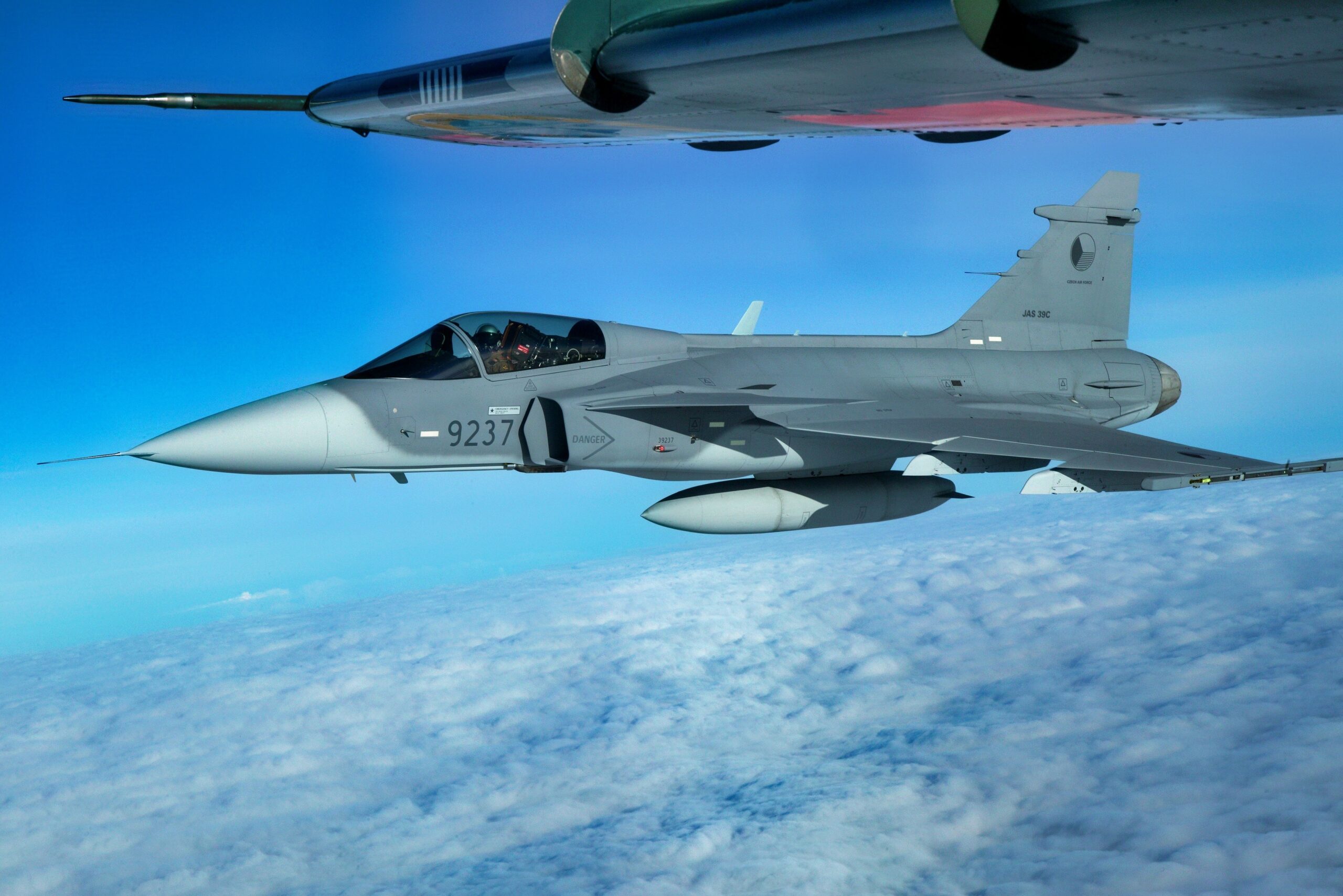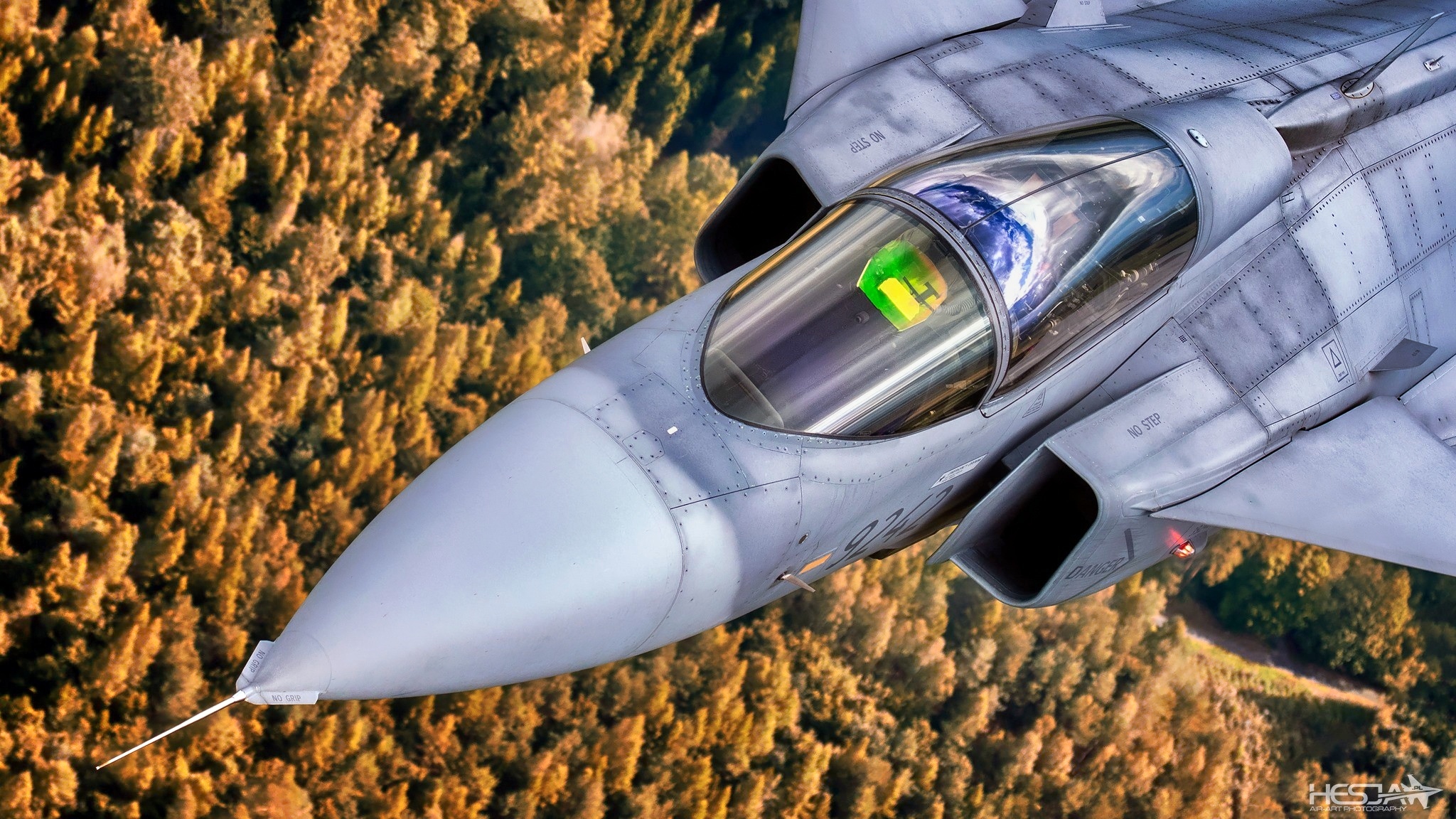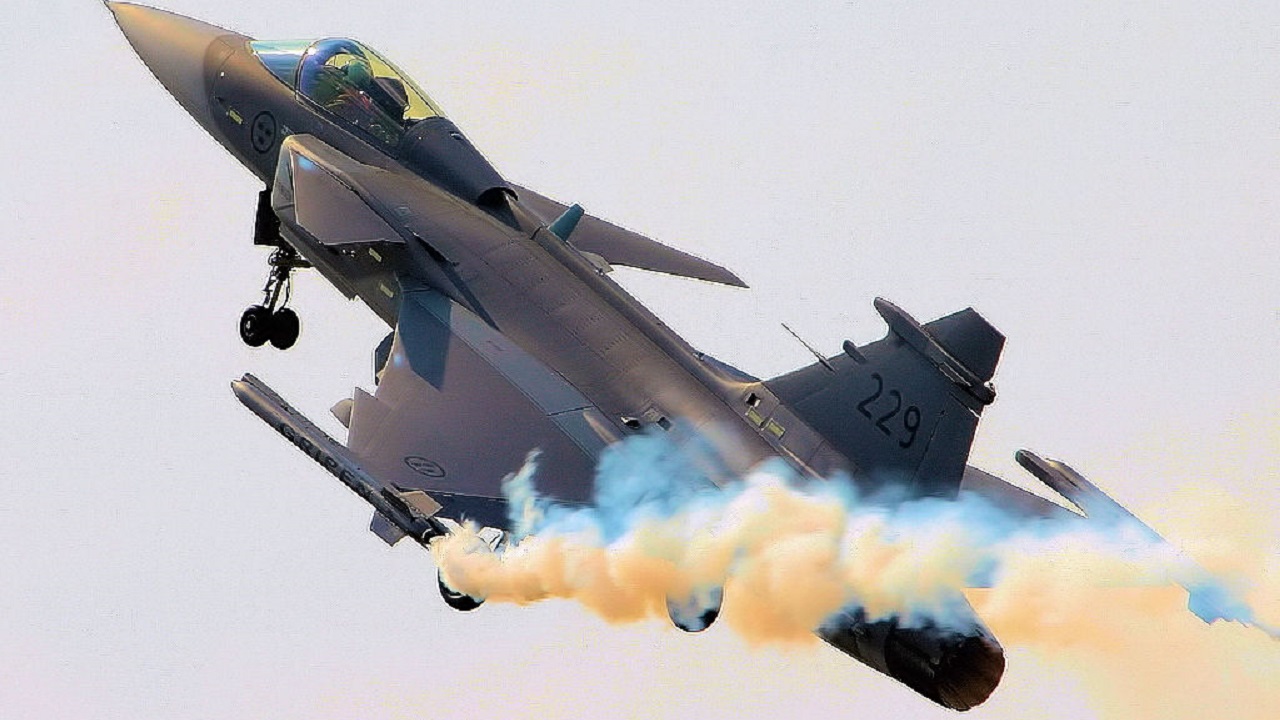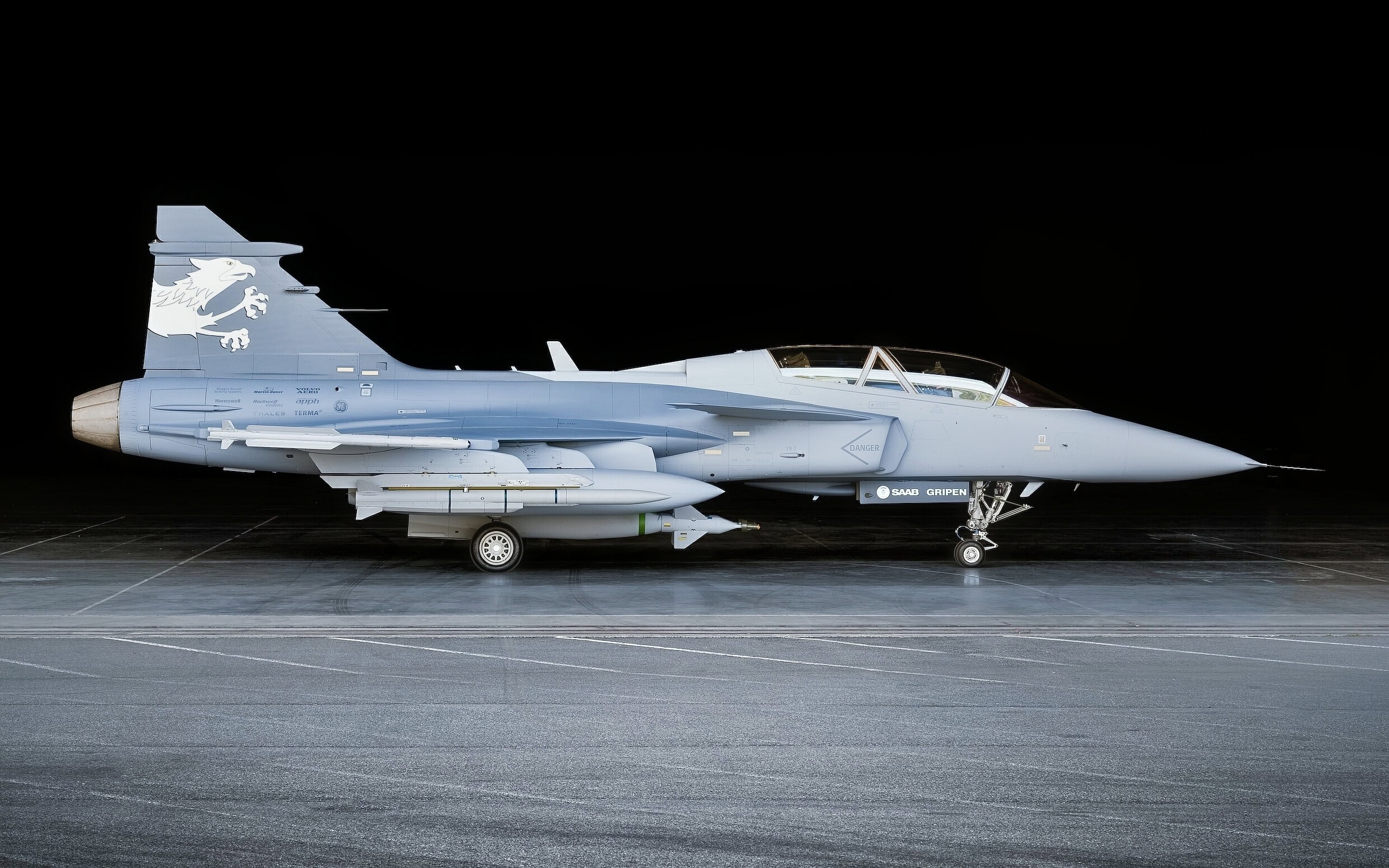Summary and Key Points: The JAS 39 Gripen was developed as an affordable, reliable fourth-generation fighter optimized for dispersed operations.
-Yet in today’s battlespace, dominated by stealth, sensor fusion, and networked capabilities, the Gripen struggles to remain relevant.

JAS 39 Gripen. Image Credit: Saab.
-Despite recent upgrades, it can’t match the stealth and integrated warfighting abilities of fifth-generation fighters like the F-35.
-With sixth-generation platforms emerging, nations seeking high-end capabilities will find the Gripen increasingly inadequate.
For countries like Canada, selecting Gripen over stealthier alternatives risks compromising interoperability and combat effectiveness.
-While still suitable for limited regional defense, the Gripen’s era as a frontline multirole fighter is quickly fading.
The JAS 39 Gripen Will Never Be the F-35
For years, the JAS 39 Gripen has been sold as the smart alternative – a lightweight, affordable fighter that delivers modern capabilities without the cost and complexity of an F-35.
Countries looking to avoid the financial and political baggage of Lockheed Martin’s fifth-generation fighter have seen the Gripen as a way to maintain a capable air force without breaking the bank.
But air combat has moved on, and the Gripen, much like the Eurofighter Typhoon, is finding itself out of time in an aerial combat world dominated by fifth-generation technologies such as stealth, sensor fusion, and networked warfighting capabilities.
JAS 39 Gripen: A Fighter from Another Era
The JAS 39Gripen, first deployed in the mid-1990s, was built around Sweden’s unique defense strategy – a strategy centered on resilience and dispersal rather than brute force. Sweden, historically neutral and wary of Russian aggression, needed a fighter that could operate from highways, be serviced by a skeleton crew, and get back into the fight quickly.
That made perfect sense in the context of Cold War Sweden, where survivability meant keeping jets in the air even if air bases were cratered by missile strikes.
But the Cold War is long past. Reflecting this new geopolitical reality, as well as technological advances in the air combat world, recent years have seen Saab attempt to modernize the Gripen so that it is a fourth-plus generation fighter – that is, one based on fourth generation technology, but upgraded to meet the needs of fifth-generation aerial combat.

JAS 39 Gripen. Image Credit: Creative Commons.
The latest version of the Gripen – the E/F variant – has thus been equipped with an AESA radar, an upgraded electronic warfare suite, and a fresh selection of air-to-air missiles. On paper, that’s enough to keep it relevant. But modern air combat isn’t about what looks good on a spec sheet – it’s about who sees, shoots, and kills first.
And that’s where the Gripen, despite all its upgrades, falls short of the mark.
The Gripen and the Eurofighter: Fighting the Same Losing Battle
The Gripen’s struggle is not unique. It shares the same fundamental problem as the Eurofighter Typhoon: it’s a fourth-generation fighter trying to stay relevant in a world that increasingly belongs to the fifth and soon, the sixth generation.
The Typhoon, a twin-engine air superiority fighter, was designed for a Cold War battlefield that never arrived. It remains an outstanding dogfighter with supercruise capability, excellent agility, and a lethal air-to-air loadout. B
ut despite continuous upgrades, it is still not a stealth aircraft, and that makes all the difference in modern warfare.
If the Eurofighter, with its superior power and range, is struggling to justify itself in today’s battlespace, the Gripen – a smaller, single-engine platform – is in an even worse position. Close-range dogfighting is a relic of the past.
Today, the winner is determined long before adversaries ever see each other. On that front, both the Gripen and the Eurofighter are at a clear disadvantage.
Can the Gripen Keep Up in a Sixth-Generation Battlespace?
With the U.S., U.K., and Europe investing in next-generation air combat – NGAD, Tempest, and FCAS – the Gripen is being left behind. The future of aerial warfare isn’t just about stealth. It’s about integrating manned and unmanned systems, AI-driven decision-making, and real-time battlespace coordination. The Gripen was never designed for that world.
Some argue that advances in electronic warfare will diminish the advantage of stealth, keeping non-stealth fighters like the Gripen in the fight. But that assumption ignores a fundamental truth: stealth is not just about invisibility, it’s about controlling when and how you are detected.

JAS 39 Gripen. Image Credit: Creative Commons.
Fighters built from the ground up to minimize their radar cross-section will always have the edge over aircraft that rely on jamming their way out of trouble.
Canada’s JAS 39 Gripen Gambit: A Costly Mistake in the Making?
In Canada, Prime Minister Mark Carney has suggested that Ottawa take another look at the Gripen instead of moving forward with the F-35. The argument is simple: the Gripen is cheaper, easier to maintain, and doesn’t carry the F-35’s sustainment headaches.
But for Canada, buying the Gripen would be a strategic mistake.
Canada isn’t just buying a new fighter – it’s investing in its ability to operate alongside NATO and NORAD partners in high-end conflicts. That means full interoperability with the U.S. and access to the latest networked warfare capabilities. The F-35, for all its flaws, delivers that in a way the Gripen simply cannot.
The Gripen is an independent operator’s jet – it works best for countries that need air sovereignty but don’t expect to fight alongside a major coalition in a high-tech battlespace. Canada does not have that luxury.
Opting for the Gripen would be a step backward, introducing logistical headaches and reducing Canada’s combat credibility in the Arctic, where stealth and advanced sensors are becoming more critical every year. The Gripen may be cheaper up front, but in a real war, the cost of being outclassed is far higher.
Holding the Line, But For How Long?
None of this means the JAS 39 Gripen is obsolete just yet. For countries that don’t expect to fight peer adversaries – nations that need a reliable, affordable multirole fighter for air policing and regional defense – it still makes sense. It’s a good aircraft. But being good is no longer good enough.
For air forces that expect to go up against the most capable adversaries, the Gripen is already teetering on the edge of irrelevance.

JAS 39 fighter. Image Credit: Creative Commons.
The world of air combat has moved past it. The fourth-generation paradigm it was built for is collapsing under the weight of sensor fusion, stealth, and networked warfare.
The Gripen, like the Eurofighter, is fighting a losing battle against the future. And the future is already here.
The real question is whether its operators are willing to admit it. Europe, at least, is moving in the right direction – albeit slowly – by developing its next-generation fighters.
But for countries still considering the Gripen, the choice is clear: invest in a modern air force, or commit to an aircraft that is already struggling to keep up.
The JAS 39 Gripen is not a bad fighter. But it is a fighter built for a world that no longer exists. And as air combat continues to evolve at a breakneck pace, the nations relying on it need to ask themselves a hard question: is good enough still good enough?
About the Author: Dr. Andrew Latham
Andrew Latham is a non-resident fellow at Defense Priorities and a professor of international relations and political theory at Macalester College in Saint Paul, MN. Andrew is now a Contributing Editor to 19FortyFive, where he writes a daily column. You can follow him on X: @aakatham.

